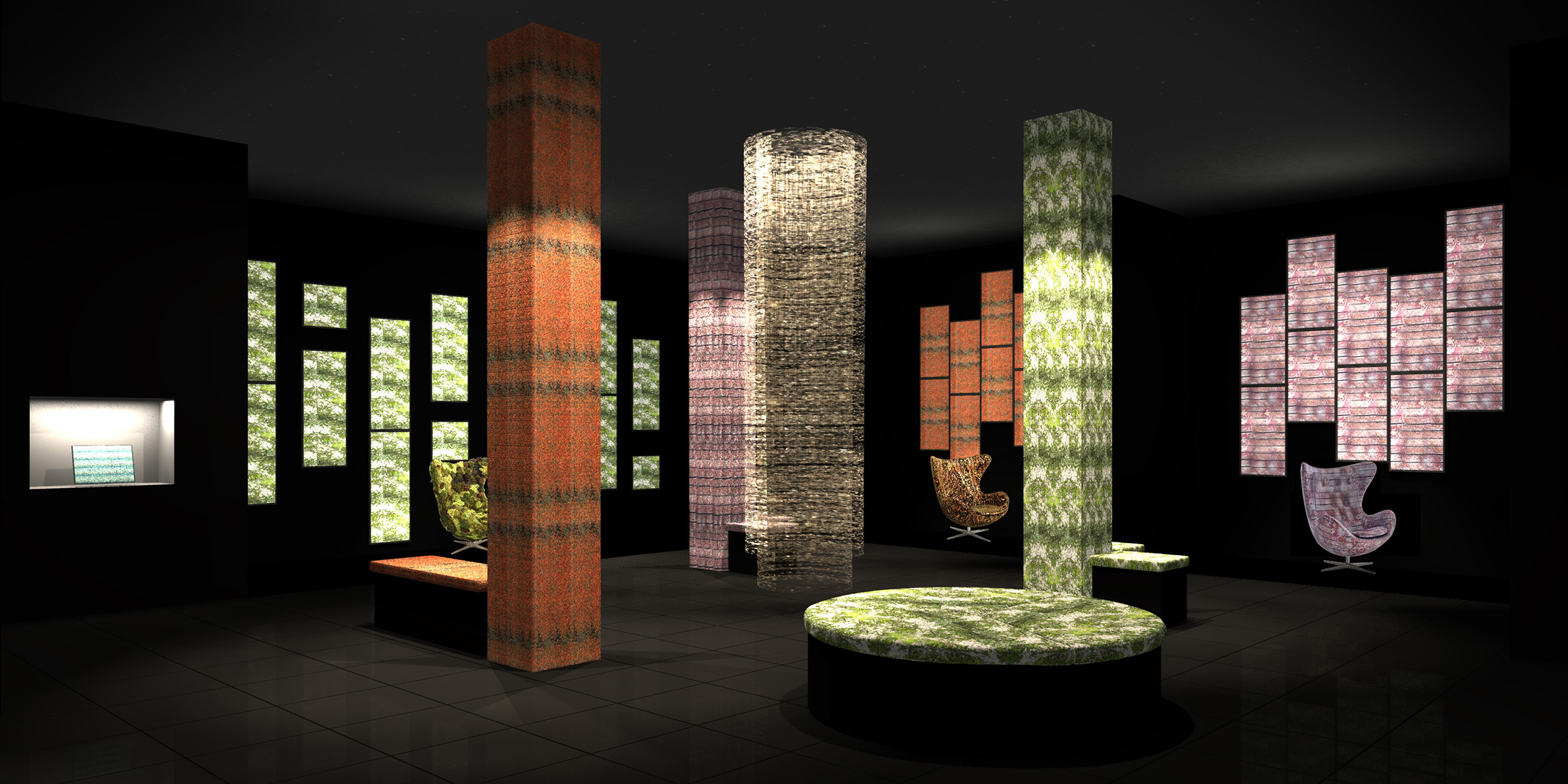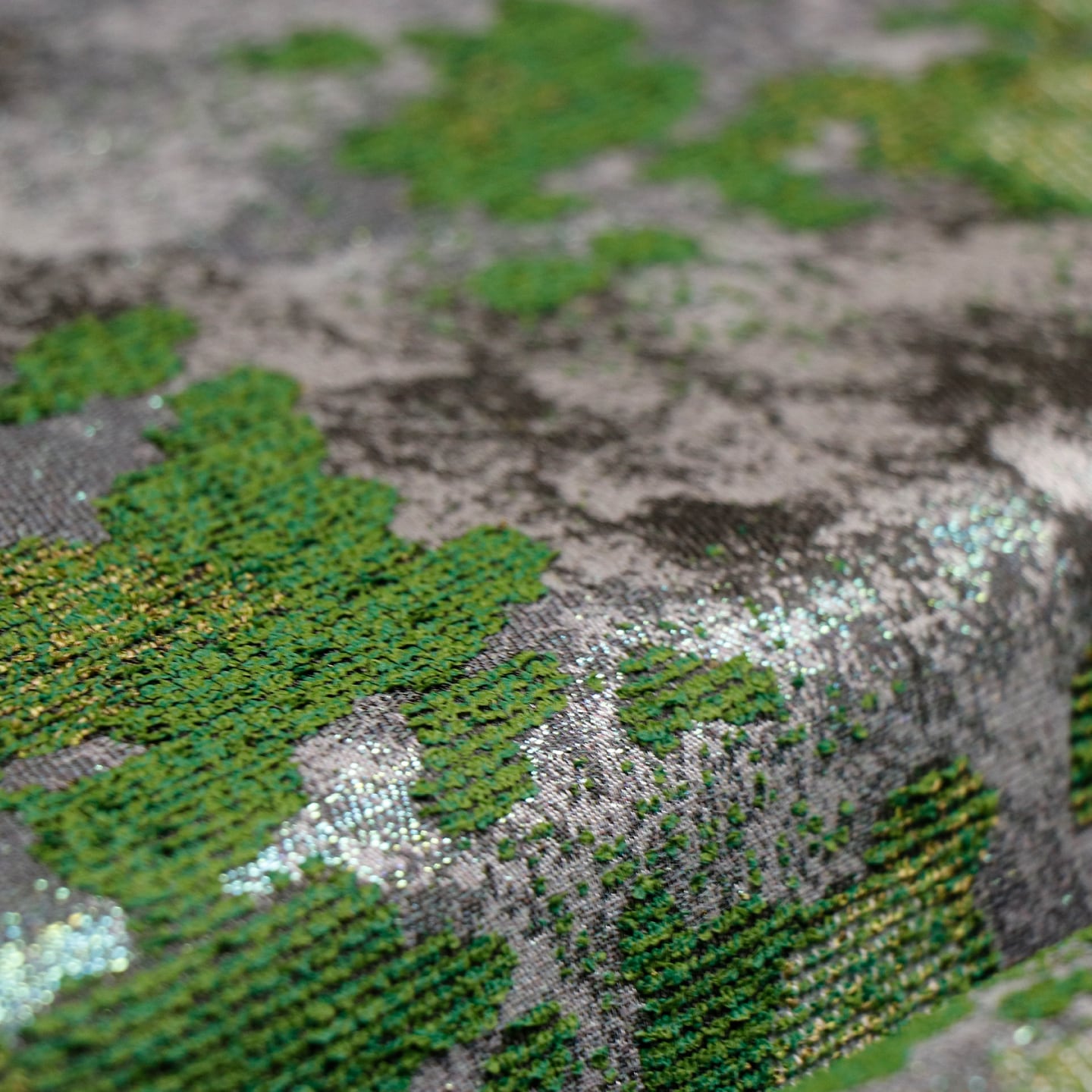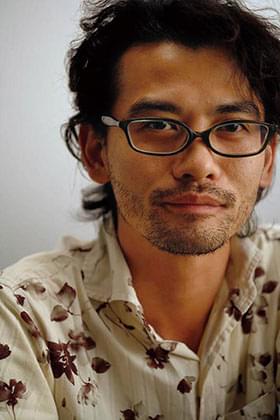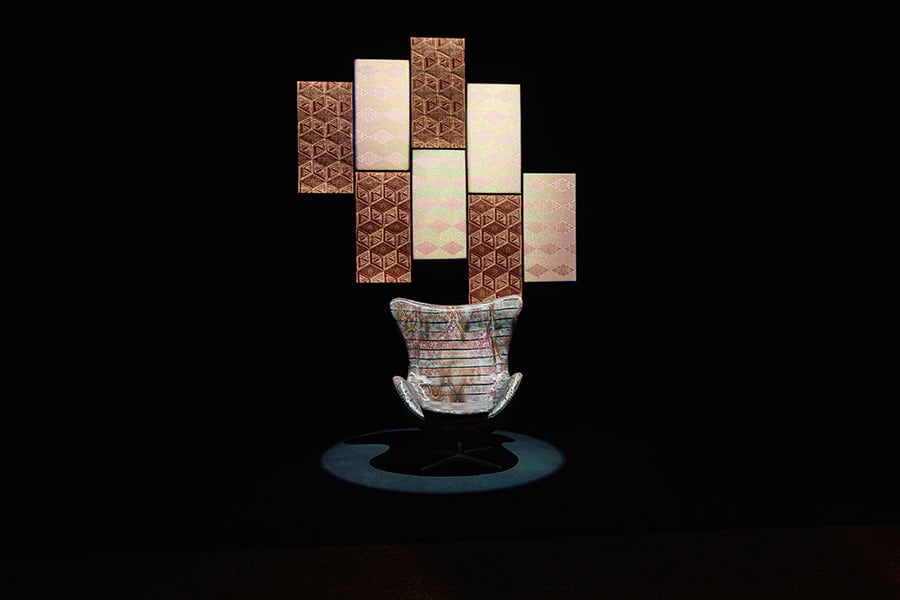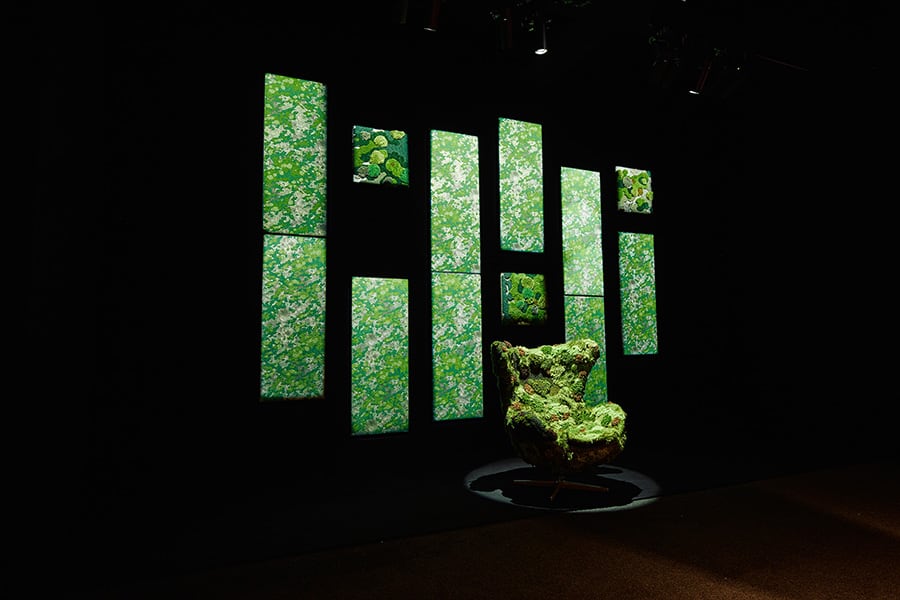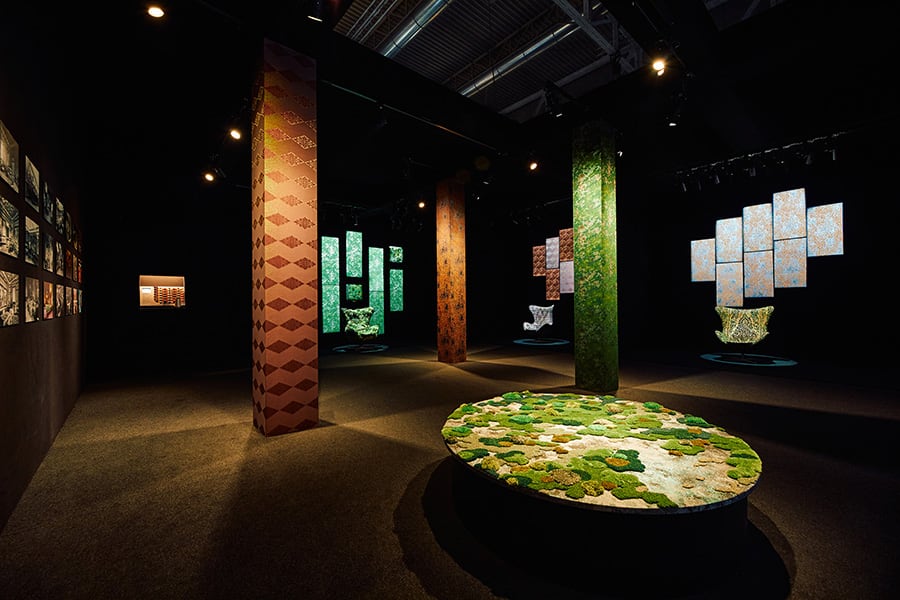Moss and Russ as Motifs
“Rust”, imbued with a depth that can only be found in aged items, and “moss,” which embodies a sense of vitality amidst decay, make up the motifs of the fabrics. Various threads and weaving techniques were used to emphasize the rough textures and color variations that occur as “rust” develops, as well as the subtle coloring and fluffiness that “moss” presents. Together, they evoke a Japanese aesthetic sense and create a three-dimensional effect and quality unique to weaving.
Special emphasis was also made on the threads used for the fabrics, including the use of foil threads and twisted design threads. Foil threads refer to threads made from thinly sliced paper with gold or platinum foil and thinly sliced shells adhered to it, and are now produced through various methods. Drawing inspiration from the traditional Nishijin weaving technique of “hikihaku,” the foil threads were woven as warp threads, and modern techniques were applied to bring out a fresh allure. Twisted design threads refer to threads created by twisting together threads of various shapes, colors, and thicknesses, and offer infinite possibilities in their expressions. For this exhibition, twisted design threads that combine foil threads with yarns of different colors were used, and produced in-house by Kawashima Selkon Textiles.
